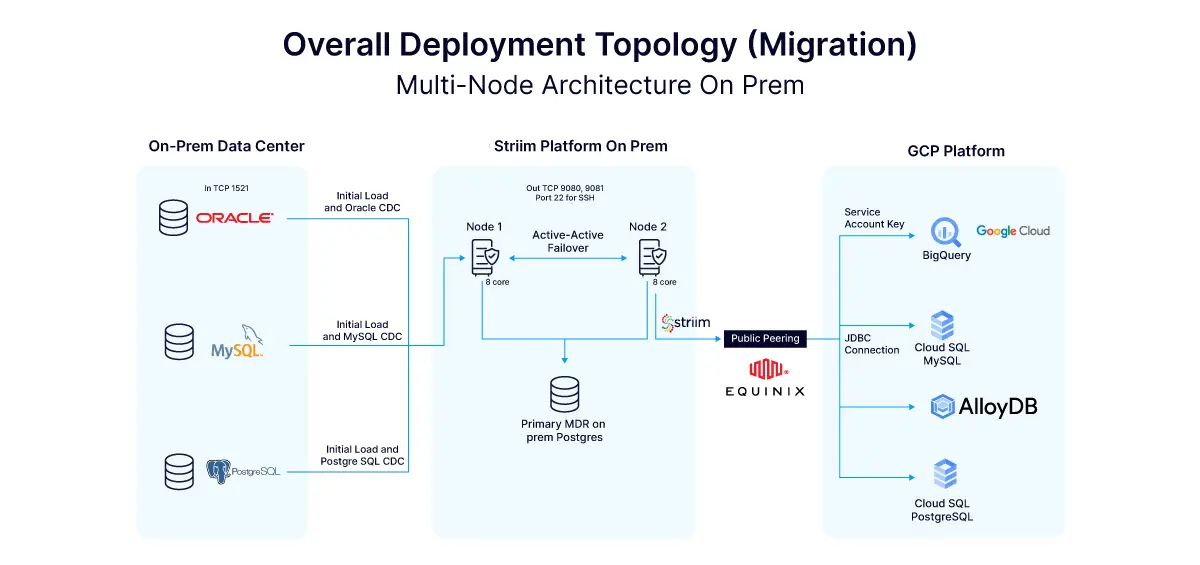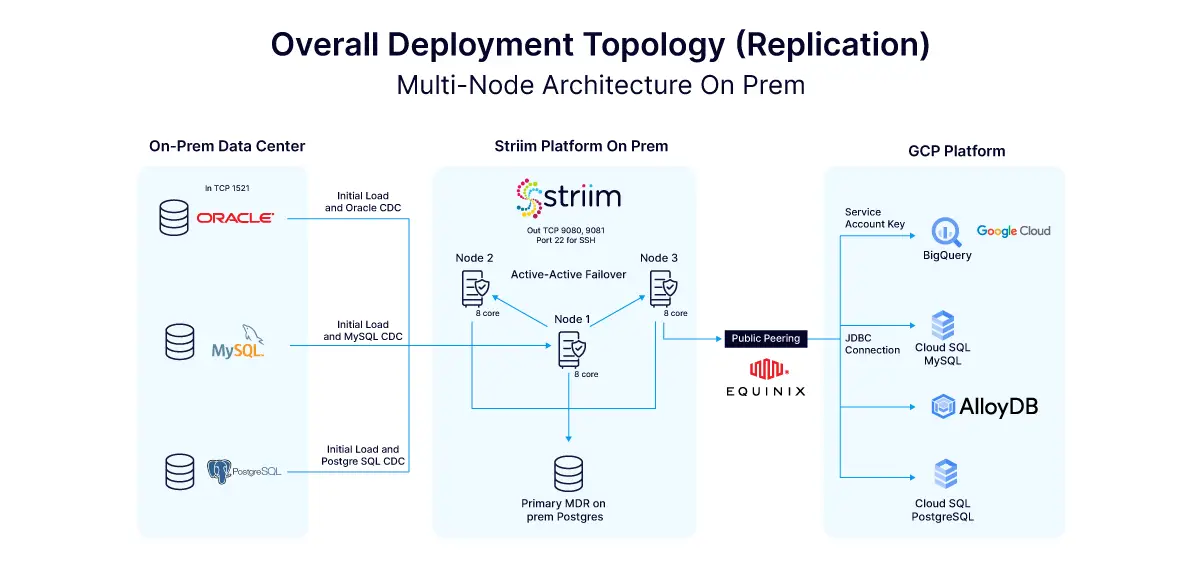Organizations across various industries require real-time access to data to drive decisions, enhance customer experiences, and streamline operations. A leading home improvement retailer recognized the need to modernize its data infrastructure in order to move data from legacy systems to the cloud and improve operational efficiency. To achieve these goals, the retailer partnered with Striim to support its data modernization and real-time integration efforts.
About the Retailer
A leading home improvement retailer with thousands of stores across North America generates annual revenue exceeding $150 billion. Serving both DIY customers and professional contractors, the retailer offers a vast range of products for home improvement, construction, and gardening. Known for its customer-centric approach and expansive product offerings, the company has maintained its leadership position in the industry for decades.
Challenges
The retailer’s legacy data infrastructure presented significant hurdles, preventing the company from achieving its modernization goals. These challenges stemmed from a complex and fragmented data environment, which included:
- Siloed Data Sources: The retailer’s on-premise databases were spread across various locations, creating silos that made it difficult to consolidate and manage data effectively.
- In-House and Third-Party Solutions: The retailer relied on a combination of in-house developed tools and third-party software. This patchwork of solutions led to inefficiencies, as different systems were not always compatible or easy to integrate.
- Complexity in Data Replication: Moving data between platforms, particularly from legacy systems to newer ones, was a time-consuming and resource-intensive process. This made it difficult for the company to support critical initiatives like supply chain optimization and migration to the cloud.
- Real-Time Data Limitations: The existing infrastructure lacked the ability to ingest and process data in real-time, making it hard for the retailer to stay agile and responsive to market demands.
- Scalability Challenges: As the company grew, its data volumes increased dramatically. The legacy systems were not built to handle this scale, creating bottlenecks and limiting the company’s ability to manage data efficiently.
- Multiple Teams Using Different Tools: Various departments, including migration and supply chain teams, used different tools and processes to manage their data. This lack of standardization added complexity and slowed down decision-making processes.
These issues underscored the need for a more efficient, scalable, and unified approach to managing the retailer’s data infrastructure.
Solution
To address the complexity and inefficiencies of its legacy data infrastructure, the retailer sought a robust platform that could simplify the migration process and provide real-time data integration across its operations.
The goal was to consolidate data replication efforts and improve supply chain efficiency by utilizing modern cloud infrastructure. After evaluating options, the retailer partnered with Striim to leverage its real-time data streaming and low-code/no-code integration capabilities.
- Striim’s platform enabled the migration of data from legacy Oracle and PostgreSQL databases to Google BigQuery.
- Using Striim’s low-code/no-code capabilities, the retailer streamlined the migration process, reducing the burden on internal resources and cutting costs.
- Striim’s real-time data integration capabilities played a vital role in optimizing supply chain operations.
- Timely, pre-processed data delivered by Striim ensured that reporting and logistics systems could optimize operations, such as configuring truckloads based on store orders.
- The platform met real-time SLAs and performed data transformations and validations on the fly, further simplifying processes.
Outcome
After facing significant challenges with its legacy data infrastructure, the retailer partnered with Striim to completely transform its approach to data management and integration. By migrating critical on-premise databases to Google Cloud and unifying its replication and migration efforts into a single platform, the retailer achieved substantial improvements in operational efficiency, scalability, and agility. These enhancements have allowed the company to optimize its data infrastructure, enabling it to better respond to evolving market demands and maintain a competitive edge in the retail industry.
Key results include:
- Unified Data Platform: Through Striim, the retailer successfully consolidated its fragmented migration and replication processes into a single, unified platform. This eliminated the need for multiple tools and reduced the complexity of managing data across various systems, improving overall operational efficiency.
- Migration to Google Cloud: Critical on-premise databases were seamlessly migrated to Google Cloud, enhancing the retailer’s ability to scale operations and support large volumes of data with greater ease. The migration to the cloud infrastructure enabled the retailer to benefit from more flexible, scalable computing resources.
- Improved Scalability: The modernization effort significantly enhanced the retailer’s ability to handle growing data volumes. With improved scalability, the company can now manage and process vast amounts of data more efficiently, which is essential for its expanding operations and growing customer base.
- Real-Time Data Integration: Striim’s real-time data streaming capabilities allowed the retailer to ingest and process data in real time. This empowered the company to make quicker, data-driven decisions, enabling faster responses to market dynamics and customer demands.
- Operational Efficiency: By modernizing its data infrastructure and integrating real-time data streaming, the retailer was able to reduce operational costs. The transition to a microservices architecture also improved system performance and reliability, resulting in smoother workflows and a more streamlined supply chain.
- Cost-Effectiveness: By moving to a cloud-based infrastructure and consolidating its migration efforts, the retailer reduced its reliance on legacy systems and lowered resource allocation for maintenance, which resulted in significant cost savings.
- Positioned for Future Success: The retailer’s newly modernized, agile, and cost-effective data infrastructure positions the company for continued growth and success. With its scalable cloud environment and real-time data capabilities, the company is well-prepared to adapt to future industry changes and remain competitive.























